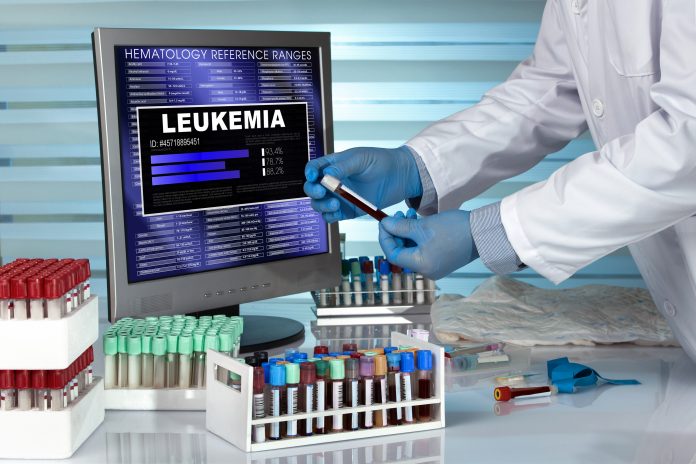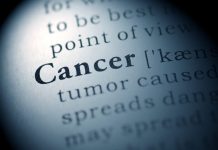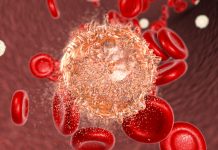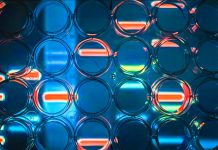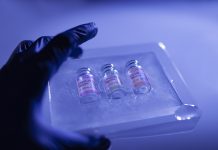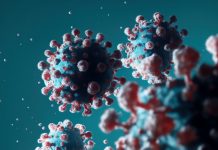Acute myeloid leukaemia (AML), a form of blood cancer is placed into the spotlight by Open Access Government
Acute myeloid leukaemia (AML) is a form of blood cancer, which affects the white blood cells known as myeloid cells. It is a rapidly progressing form of leukaemia. Blood cells are formed in the bone marrow, which is the spongy tissue found inside the bones. Blood-forming stem cells divide to produce either more stem cells or immature cells that become mature blood cells over time.
A myeloid stem cell becomes one of three types of mature blood cells:
- Red blood cells that carry oxygen to all tissues of the body.
- Platelets that form blood clots to stop bleeding.
- Granulocytes (white blood cells) that fight infection and disease.
Acute myeloid leukaemia (AML) exists in different forms depending on which type of myeloid cell is being produced. The most important subtype is called acute promyelocytic leukaemia (APL). APL makes up about one in 10 cases of AML; it is important because it is treated very differently. A special test can detect a characteristic genetic abnormality in APL.
Acute leukaemia progresses rapidly, unless effectively treated but, especially in younger or fitter patients, it can often be cured with standard treatments.
What causes AML?
In most cases of AML there is no obvious cause, but it is important to understand that:
- It is not a condition which can be caught from someone else (contagious) and;
- It is not passed on from a parent to a child (inherited).
The risk factors are:
- Age – like most forms of cancer AML is more common in older people;
- Being male – AML affects slightly more males more than females;
- Genes – In the vast majority of cases AML does not run in families. There have been very rare cases of families where AML affects more than one generation. This is very rare, and, in almost all cases, there is no cause for anxiety or for screening tests;
- Environment – Although most cases do not have an apparent cause there are some factors such as some chemicals and high levels of radiation which may increase the chance of developing leukaemia. The most common chemical cause is smoking, which is thought to cause about one in four cases and;
- Other bone marrow diseases – Some cases of AML affect people who already have a bone marrow disease. The bone marrow diseases most often associated in this way are myelodysplastic syndrome (MDS) and the myeloproliferative neoplasms (MPN).
Signs and symptoms of AML
The most common signs and symptoms are caused by the bone marrow being unable to produce enough normal blood cells. The signs and symptoms include:
- Anaemia – due to lack of red blood cells;
- Weakness, tiredness, shortness of breath, light-headedness, palpitations;
- Infections – due to lack of normal white blood cells;
- Infections are more frequent, more severe and last longer;
- Fever, malaise (general feeling of illness) and sweats;
- Purpura (small bruises in skin), nosebleeds, bleeding gums and;
- Bleeding and bruising – due to lack of platelets.
Other signs and symptoms (which may only occur in some forms) include:
- Bone pain, enlarged liver/spleen, swollen gums, skin lumps – these are all caused by collections of AML cells in other tissues;
- Bleeding may be a particular problem in APL and;
- Some patients who have a very high white cell count may develop a condition called leucostasis, in which blood flow is slowed because of thickening of the blood.
Diagnosis
Although a doctor may suspect a patient has leukaemia based on signs and symptoms, it can only be diagnosed by laboratory tests. The results of a simple blood count will usually indicate leukaemia although, rarely, a blood count may be normal. Virtually all patients with AML will have bone marrow samples taken to confirm the diagnosis and to help to determine exactly what type of leukaemia a patient has. More specialised tests are often done at the same time.
Treatment of AML
If you are being treated for any type of leukaemia, you may be asked to consider taking part in a clinical trial. Clinical trials are scientific studies to find the best treatment; you can find more information on our website at www.leukaemiacare.org.uk/clinical-trials.
Virtually all patients with AML will start treatment immediately. The main exception would be if a patient is very ill with other medical problems and is not fit enough to receive treatment. Acute leukaemia is often curable with standard treatments, in younger and/or fitter patients. Older or less fit patients will usually have a good initial response to treatment, but the condition will most often come back, this is known as a relapse.
The main ways in which AML is treated are:
- Chemotherapy – Cell-killing drugs;
- Radiation therapy – Usually only given as part of a stem cell transplant in AML;
- Stem cell transplant – Younger/fitter patients may be given a stem cell transplant (bone marrow transplant). This is done using healthy stem cells from a donor. This may be done if chemotherapy does not cure the disease.
Chemotherapy is the use of cell-killing drugs. These kill the cancer cells and/or stop them from dividing. Chemotherapy is usually given in blocks or ‘cycles’ of treatment. One cycle of treatment will consist of a series of doses of chemotherapy followed by a break for the healthy cells to recover.
AML cells may be found in the fluid around the brain and spine (called CSF). If this is the case, then chemotherapy includes injections into this fluid. This is called intrathecal chemotherapy.
Chemotherapy is normally given as a combination of drugs. If patients with APL are given standard AML chemotherapy, there is a high risk of severe bleeding. This can be avoided by giving a drug called retinoin or retinoic acid which makes the APL cells mature and die off naturally. Sometimes an arsenic based drug is used instead, usually as a second line treatment. Retinoin and arsenic treatment are sometimes given along with standard chemotherapy.
The details of treatment will vary depending on the specific type of AML, age and general fitness. Patients will be given a chance to discuss treatment options and detailed information on their treatment plan before it starts. The side effects of treatment vary between different types of treatment and different patients. Patients will be given detailed information about any likely side effects before treatment starts.
Questions to ask your doctor about AML
We understand going through a blood cancer journey can be difficult. It may help to talk to a close friend or relative about how you are feeling. Here are some questions that may be useful to ask your doctor.
- How would I now if I had AML?
- What tests will I need to have?
- What will the tests show?
- How long will the results take?
- How rare is AML?
- What sort of treatment will I need?
- How long will my treatment last?
- What will the side effects be?
- Is there anything I should or shouldn’t eat?
- Will I be able to go back to work?
- Where can I get help with claiming benefits and grants?
- Where can I get help dealing with my feelings? ■
For more information, please visit these links:
www.twitter.com/LeukaemiaCareUK
Open Access Government
editorial@adjacentopenaccess.org
Editor's Recommended Articles
-
Must Read >> Leukaemia mutations are almost inevitable
-
Must Read >> Living with Leukaemia



